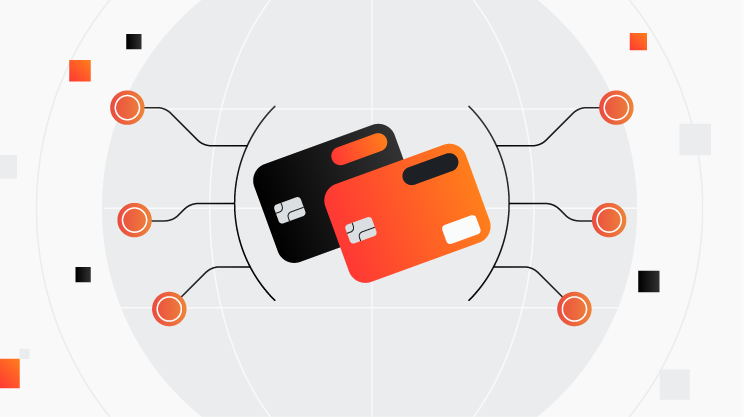What are cross-border payments and how do they work for businesses?
- •What are cross-border payments?
- •How do cross-border payments work?
- •How can businesses make cross-border payments?
- •How businesses benefit from cross-border payments
- •Cross-border payment challenges
- •How to choose a cross-border payments platform
- •Simplify your cross-border payments with modern solutions
Key takeaways:
Cross-border payments are financial transactions where money is transferred from one country to another, often involving different currencies.
International transfers take longer and cost more money than local transfers, which can add up for businesses that make cross-border payments frequently.
You can use wire transfers, local transfers, and other methods to make cross-border payments.
Being able to handle cross-border payments can really make a big difference in growing your business worldwide. A smooth and trustworthy payment system lets you tap into international talent, break into new markets, and keep your global supply chains running smoothly.
As businesses expand into more global markets, modern cross-border payment solutions can make the financial movement of money faster, more reliable, and cost-effective.
What are cross-border payments?
Cross-border payments are transactions between a sender and receiver located in separate countries, sometimes in different currencies. This includes individuals sending money to their relatives abroad and businesses paying their international suppliers and employees.
These days, businesses rely heavily on cross-border payments for their day-to-day operations. However, legacy systems such as telegraphic transfers and the SWIFT (Society for Worldwide Interbank Financial Telecommunications) network transactions weren't originally designed to handle transactions of this scale.
International bank transfers can take up to five days via wire transfer, although the actual time can vary depending on the countries involved, the banks, and the transaction details. Another obstacle is that manually initiating multiple payments to multiple recipients in various countries each month can be time-consuming for a growing business.
Transaction fees and currency conversion fees can also build up, making cross-border payments quite expensive. When you’re making cross-border payments on a global scale, you’ll need a robust international payment solution.
This is where modern providers like us come in to help you make fast, cost-effective cross-border payments. With Airwallex Business Account, you can send payments to 150+ countries and regions in 60+ currencies in as little as one business day.
Make your first transfer with an Airwallex Business Account
How do cross-border payments work?
Cross-border payments involve several key steps to ensure secure and efficient transactions. Below is a concise overview of the steps:
Initiation of payment: A sender initiates a transfer with their financial institution, specifying a recipient, country, and currency. Payment methods include bank transfers, credit or debit cards, or an online payment platform.
Currency conversion: If different currencies are used, the amount is converted based on the exchange rate, and the sender may pay conversion and transaction fees.
Intermediary banks: If the sender’s bank lacks a direct relationship with the recipient’s bank, intermediary banks are used. Most transfers are processed through the SWIFT network.
Processing and settlement: The payment undergoes compliance and regulatory checks, depending on the countries and banks involved.
Notification: Both sender and recipient receive notifications confirming the successful completion of the transaction.
With the speed at which global trade takes place, fintech companies have answered the call for faster and more cost-effective solutions. By leveraging local payment networks, fintechs can offer businesses access to these networks no matter where they’re based. For instance, a Europe-based business can use the Automated Clearing House (ACH) to facilitate quick and affordable transactions with US vendors.

How can businesses make cross-border payments?
Businesses can make cross-border payments via traditional SWIFT payments, local payment systems, debit or credit card payments, and digital wallets. Each has its benefits, but tapping into local payment rails can be the quickest, most cost-effective choice for cross-border businesses.
Transfer method | Speed | Cost | Ease |
|---|---|---|---|
SWIFT payments | Low - Medium | Medium - High | Medium |
Local payment rails | High | Low | High |
Card payments | High | High | High |
SWIFT payments
SWIFT has existed for over 50 years, making it a familiar and reliable system for international wire transfers. While banks use SWIFT to facilitate international transfers, the network doesn’t transfer any funds itself.
SWIFT transactions charge transaction and foreign exchange fees, and transfers can take up to five days or more to process. While it’s one of the safer options, it’s not the fastest or most cost-efficient system available.
Local payment rails
Local payment rails are a game-changer for businesses looking to expand their operations globally. Many modern fintech platforms offer cross-border transfers by integrating with local payment infrastructure.
These fintechs enable you to open local bank accounts in key countries, letting you make payments like a local, bypassing the challenges and costs typically associated with what would otherwise be an international transfer. By using these region-specific systems, you can significantly reduce costs and improve the speed and efficiency of your transactions.
Card payments
Credit and debit card payments might be the most obvious and accessible solution. A corporate card lets you make in-person and online payments almost anywhere instantly.
However, cards are also your most expensive option, with foreign transaction fees as high as 3.25% of the payment. Not all suppliers are receptive to cards. Some countries charge recipients an additional fee for card payments on top of interchange fees and other existing costs.
How businesses benefit from cross-border payments
Cross-border payments help you gain access to global markets, which can significantly improve your cost competitiveness. You can source supplies from a broader range of international vendors to find the highest-quality materials at the most competitive prices, which can significantly reduce costs and improve the quality of their products.
It also aids n hiring a global talent pool, which can be important for businesses aiming to stay competitive in today's globalised workforce. By enabling efficient international transactions, businesses can attract and retain top talent from around the world, regardless of geographical boundaries.
Cross-border payment challenges
Cross-border transfers are part of the cost of doing business, but they are inevitable. Many businesses are finding ways around reducing transaction costs, which include things like bank charges, currency conversion fees, and intermediary bank fees. These costs can have a material impact on your profit margins, particularly if you make frequent transactions.
On top of that, you may want to mitigate currency exchange risks and payment delays. Fluctuations in exchange rates can lead to financial losses, and the slow processing times of international transfers can disrupt your cash flow and operational efficiency.
By using fintechs that use local payment systems, you can reduce the high fees and slow processing times typically associated with international wire transfers. Local payment methods, such as Single Euro Payments Area (SEPA) in Europe and ACH in the United States, are generally faster and more cost-effective, and can solve cost pressures related to cross-border transfers.
How to choose a cross-border payments platform
Deciding on the right cross-border payment solution for you comes down to cost, speed, reach, and the ability to make mass payments, especially as your business grows.
Here are some key features to consider as you compare providers:
Cost of transfers: See if the provider uses real-time mid-market exchange rates, which are more favourable than the typical bank rate, allowing you to save on cross-border payments.
Speed of transfers: Evaluate how quickly the platform can process payments. Platforms that utilise local payment rails can offer faster and more affordable transfers.
Global reach: Check the number of countries and currencies the platform supports. A broader reach can be helpful for businesses with overseas suppliers or employees.
Batch payments: If you need to make multiple payments at a go, look for platforms that support batch payments. This can improve your business productivity.

Simplify your cross-border payments with modern solutions
Cross-border payments are at the heart of today's interconnected global economy, enabling businesses to expand into new markets and secure competitive resources. However, navigating the complexities of international transactions can be a challenge without the right solutions.
Start making cross-border payments and transfers quickly and cost-effectively with an Airwallex Business Account. You can take advantage of payouts to over 150 countries. With 90% of transactions going through payment rails instead of SWIFT, transfers are received as quickly as a few hours.
Make your first transfer with an Airwallex Business Account today.
Share

Emma supports all things brand at Airwallex, bringing her love of travel and storytelling to the role. She enjoys writing about how Airwallex empowers businesses to expand seamlessly across borders.
View this article in another region:AustraliaEurope - EnglishEurope - NederlandsNew ZealandSingaporeGlobal
Related Posts
How to start a business in the UK: Your guide to streamlined oper...
•7 minutes

What are payment rails? How they work and the types of payment ra...
•10 minutes
